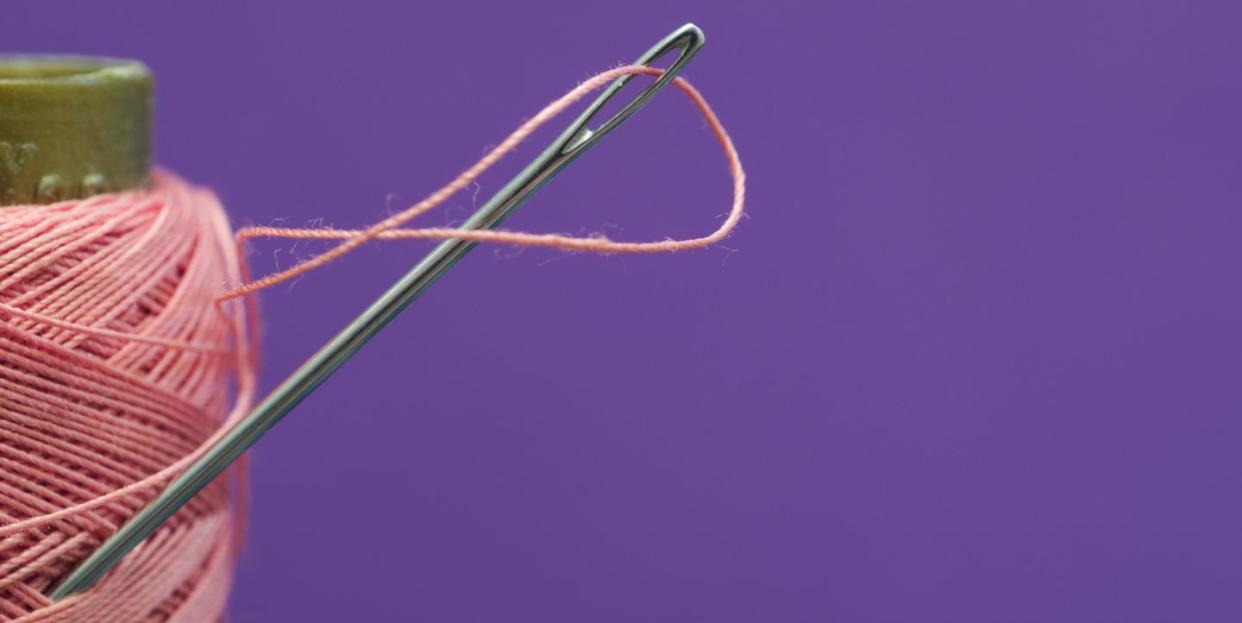What Is a Thread Face Lift?

It’s hard to resist the pull of a thread lift. After all, the procedure is said to deliver something akin to a mini-face lift; it’s quick, relatively pain-free, and involves neither injections nor scalpels. It can even be a shortcut to achieving the snatched jawline so sought-after on social media. What’s not to love?
The thread lift has, historically, had some ups and downs. Independently “invented” in the 1990s by a Russian physician and a North Carolinian plastic surgeon, the process was initially known as “the mid-face sling.” Hoisting the face in such a fashion enjoyed brief popularity before the threads—which were permanent and prone to all kinds of problems—were recalled by the FDA. Fast-forward to the early 2000s, and a new type of thread—and thread lift—emerged, courtesy of dissolvable sutures, which were originally used safely in cardiovascular surgery and found to leave behind a tract of collagen. These threads are gentle, easy for practitioners to use, and typically free of complications.
Before you sign up, though, a little sewing class: Here’s everything you need to know about the pros and cons of thread lifts to help you decide if they are right for you.
MORE: The T&C 2022 Procedure Guide
What are thread lifts and how do they work?
“Threads are dissolvable sutures with one-way barbs on them,” says Manhattan dermatologist Arash Akhaven. “They are inserted through a tiny opening in the skin with a canula, and the barbs act like little fish-hooks that attach to the connective tissue. This enables you to lift the area of the face you’re targeting by simply pulling them in the direction you want to lift.” After the threads dissolve, in about four to six months, they leave behind newly generated collagen, which can theoretically continue to firm facial contours even after the threads are gone.
Who is a good candidate for a thread lift?
"There's never one treatment that does it all, and thread lifts are one piece of the puzzle when it comes to facial rejuvenation,” says Dr. Shereene Idriss, cosmetic dermatologist and founder of Idriss Dermatology in NYC. “Thread lifts help to really lift the skin, especially if you have sagging skin or skin laxity, but they do not help to fully restore volume.” In other words, thread lifts just help pick things up a bit; if you are in need of more significant volume, fillers—or a combination of fillers and threads—may be the way to go.
“I don’t think, personally, that the threads stimulate enough collagen to make any kind of impact once they have dissolved,” says Akhaven. “But the procedure is great for short term. I like doing it for someone before an event, like a wedding. It’s a quick fix for someone who doesn’t want to do filler or can’t wait for different procedures to kick in that take months to build collagen.”
What is after-care like?
“The recovery is pretty instant," says Akhaven. "You have a little opening from where the needle goes in, but you can cover it with makeup until it heals. It’s something you can do literally the day before an event." There might be a small amount of bruising or swelling, says Idriss, and, because there is a chance that the threads can break, "we do recommend that patients do not open their mouth very wide, like biting out of an apple, when threads are inserted into the face, especially along the jawline" for a few weeks after the procedure.
What areas are thread lifts best for?
Threads can be used anywhere on the body—to tighten crinkly elbows and knees, or even smooth sagging skin on the abdomen. On the face, they can be used to "spot treat" specific areas—Akhaven uses them for patients who want a targeted lift to the brows, for example—or for an overall pick-me-up. The effect may not be as dramatic as a face-lift, but it can still deliver noticeable rejuvenation—especially when did-she-or-didn't-she subtlety is the goal.
“I like using threads best when fillers can't do everything and when you're looking at a face as a whole and you need to not just reposition volume, but also to get that extra lift," says Idriss. "It does offer that instant gratification for the patient, as well. It's a quick and easy process, but if you're trying to save all your money for one procedure it may not offer the best bang for your buck.”
MORE: What Is the Vampire Facial and What Are the Benefits
You Might Also Like

